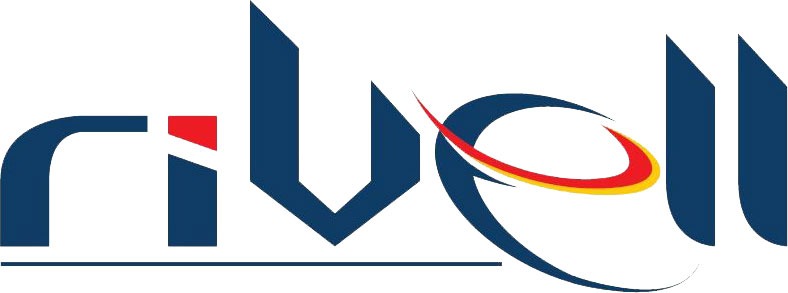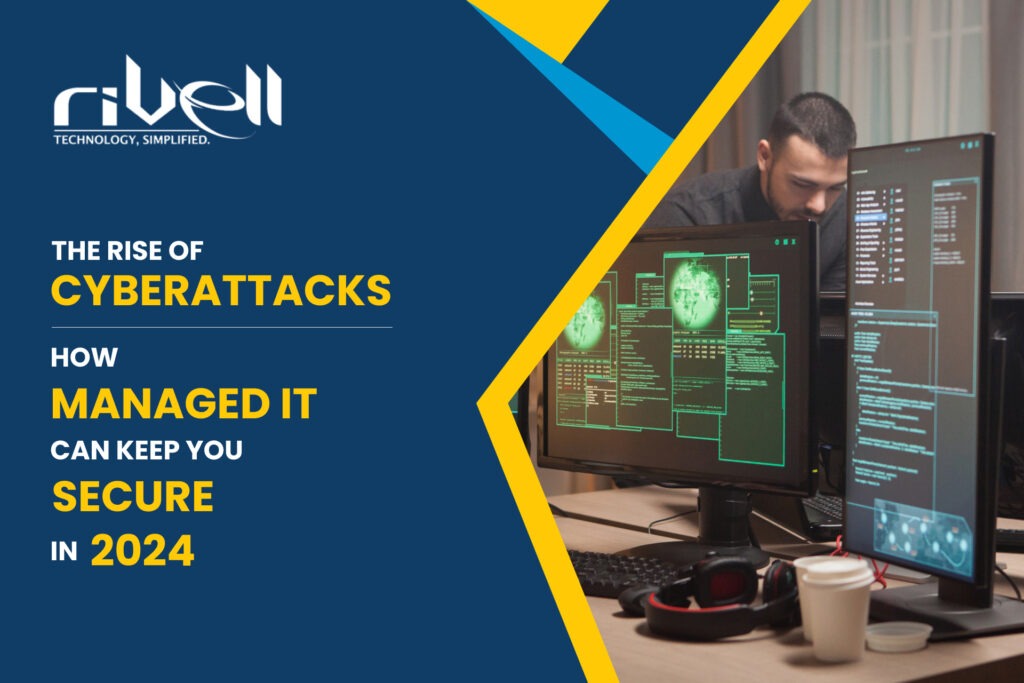Introduction
In the rapidly advancing digital age of 2024, the escalation of cyberattacks has become a stark reality, posing an ever-growing threat to individuals and organizations worldwide. This blog aims to explore the intricate landscape of cyber threats, shedding light on the dynamic nature of attacks, and providing insights into how Managed IT services can serve as a crucial shield in safeguarding against these evolving digital perils.
Understanding the Cyber Threat Landscape
The digital landscape is in constant flux, with cybercriminals adapting and evolving their tactics. From traditional malware to sophisticated phishing schemes and ransomware attacks, understanding the dynamic nature of cyber threats is essential for developing effective cybersecurity strategies.
1. Evolution of Cyber Threats
The progression of cyber threats is akin to a fast-paced game where adversaries constantly reinvent their tactics. Traditional malware, once the primary weapon of choice, has evolved into more sophisticated forms such as ransomware, blending encryption with extortion for maximum impact. The advent of the Internet of Things (IoT) has further expanded the attack surface, providing cybercriminals with new entry points into networks.
2. Sophistication in Social Engineering
While technological advancements have bolstered cybersecurity measures, social engineering remains a potent and evolving threat. Phishing attacks, for instance, have grown more sophisticated, utilizing personalized and context-aware approaches to deceive even the most vigilant users. Cybercriminals exploit human psychology, leveraging social connections and trust to infiltrate systems and networks.
3. Targeted Attacks and Advanced Persistent Threats (APTs)
The dynamic nature of cyber threats is exemplified by the rise of targeted attacks and APTs. Adversaries meticulously plan and execute attacks, often remaining undetected for extended periods. These attacks go beyond opportunistic strikes, aiming for specific organizations or individuals. Their persistence and adaptability make them particularly challenging to combat.
4. Exploitation of Emerging Technologies
As society embraces cutting-edge technologies such as artificial intelligence (AI), machine learning (ML), and the decentralized capabilities of blockchain, cybercriminals are quick to identify and exploit potential vulnerabilities. The dynamic interplay between technological innovation and cyber threats requires constant vigilance and proactive measures to secure emerging digital frontiers.
5. The Dark Web and Underground Economy
The dynamic nature of cyber threats extends into the shadows of the dark web, where a thriving underground economy fuels the exchange of tools, services, and stolen data. Cybercriminals collaborate, sharing insights and resources to enhance their capabilities. This interconnected web of illicit activities further complicates efforts to trace and apprehend malicious actors.
Recent Trends in Cyberattacks
In the rapidly evolving landscape of cybersecurity, staying ahead of the curve is essential to defending against an ever-expanding array of cyber threats. As we navigate the intricate web of digital perils, understanding the recent trends in cyberattacks is paramount.
1. Rise of Ransomware-as-a-Service (RaaS)
Ransomware has undergone a significant transformation with the emergence of Ransomware-as-a-Service (RaaS). This model allows even non-technical individuals to launch ransomware attacks with minimal effort. Criminals can now rent ransomware variants, leading to a proliferation of attacks across a broad spectrum of targets. The RaaS model democratizes cybercrime, making it more accessible to a wider range of threat actors.
2. Double Extortion Tactics
Cybercriminals have evolved their ransomware strategies by adopting double extortion tactics. In addition to encrypting files, attackers now exfiltrate sensitive data before encryption. This data is then used as leverage to extort victims, increasing the pressure to pay the ransom to prevent the public release of confidential information. This dual-threat approach raises the stakes for organizations facing ransomware attacks.
3. Supply Chain Attacks
Supply chain attacks have gained prominence as cybercriminals target organizations through vulnerabilities in their interconnected networks. Attackers compromise suppliers or service providers to gain access to the ultimate target. This tactic was notably exemplified by the SolarWinds incident, where a supply chain compromise led to widespread infiltration of government and private-sector networks.
4. Exploitation of Remote Work Weaknesses
The global shift towards remote work in the wake of the COVID-19 pandemic has opened new avenues for cyberattacks. Threat actors exploit weaknesses in remote work infrastructure, targeting virtual private network (VPN) vulnerabilities and exploiting the increased reliance on cloud services. Remote work-related attacks have become a lucrative endeavor for cybercriminals seeking to capitalize on the expanded attack surface.
5. Sophisticated Phishing Attacks
Phishing attacks continue to be a perennial threat, but their sophistication has reached new heights. Beyond traditional email phishing, adversaries employ advanced social engineering techniques. Voice phishing (vishing), smishing (SMS phishing), and spear phishing campaigns tailor attacks to specific individuals, making them harder to detect.
6. Emergence of Deepfake Threats
Deepfake technology, capable of creating realistic fake audio and video content, is becoming a tool for cyber threats. Malicious actors use deepfakes to impersonate executives, create convincing social engineering scams, or spread disinformation. This trend adds a layer of complexity to cybersecurity efforts, requiring new strategies for detection and mitigation.
What is Managed IT?
Managed IT services encompass a comprehensive approach to handling an organization’s technology infrastructure and support. Unlike traditional IT services, Managed IT goes beyond reactive problem-solving, adopting a proactive stance that emphasizes prevention, detection, and continuous improvement.
Managed IT providers offer comprehensive cybersecurity solutions designed to detect, prevent, and mitigate the impact of cyberattacks. By outsourcing their IT needs to managed service providers (MSPs), businesses can benefit from round-the-clock monitoring, threat intelligence, and rapid incident response capabilities.
Check Our Recent Case Study : VoIP & IT Services For Education Company
Key Benefits of Managed IT for Cybersecurity
1. Real-time Monitoring
One of the primary advantages of Managed IT is real-time monitoring of networks, systems, and endpoints. Constant surveillance enables the rapid identification of anomalies or potential security threats, allowing for timely intervention.
2. Threat Detection and Response
Managed IT services employ advanced threat detection mechanisms, leveraging artificial intelligence and machine learning to identify patterns indicative of cyber threats. In the event of an incident, Managed IT providers ensure swift and effective response measures, minimizing potential damage.
3. Proactive Measures
Rather than waiting for issues to arise, Managed IT takes a proactive approach. Regular system updates, patch management, and vulnerability assessments are integral components, reducing the likelihood of exploitation by cyber adversaries.
4. Enhanced Security Awareness
Managed IT services often include security awareness training for employees. Educated users become a critical line of defense against phishing attacks, social engineering, and other tactics aimed at exploiting human vulnerabilities.
5. Disaster Recovery and Business Continuity
In the event of a cyber incident or data breach, Managed IT providers offer robust disaster recovery and business continuity solutions. From data backups to contingency planning, businesses can rest assured that their critical systems and data are protected and recoverable in the face of adversity.
Conclusion
As cyber threats continue to evolve and proliferate, businesses must prioritize cybersecurity to safeguard their digital assets and maintain operational resilience. Managed IT services offer a holistic approach to cybersecurity, providing proactive threat detection, continuous monitoring, and robust incident response capabilities. By partnering with a trusted Managed IT provider, businesses can stay ahead of cyber threats and navigate the complex cybersecurity landscape with confidence in 2024 and beyond.
In the face of escalating cyber threats, businesses need reliable partners to navigate the complex landscape of cybersecurity. Rivell stands as a beacon of trust and expertise, offering tailored Managed IT services designed to fortify your defenses and safeguard your digital assets. With Rivell’s advanced threat detection capabilities, continuous monitoring, and robust incident response protocols, you can rest assured that your business is in safe hands.
Partner with Rivell today and elevate your cybersecurity posture to new heights. Call us at (856) 603 0000 or Submit a contact form.









